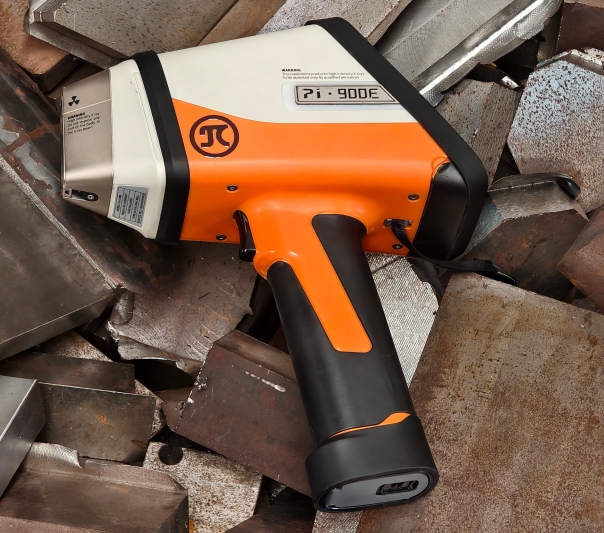
Metal Material
A high-tech enterprise focusing on the development and application of X-ray technology products, committed to becoming a leading supplier of X-ray industrial testing solutions.
X-ray Fluorescence Analyzer: The Essential Tool for Quality Control in Manufacturing
In today’s fast-paced manufacturing industry, quality control is paramount. Ensuring that products meet the required specifications and standards is crucial for customer satisfaction, regulatory compliance, and cost-efficiency. One tool that has become indispensable in maintaining quality across various industries is the X-ray Fluorescence (XRF) analyzer. This device is a powerful, non-destructive testing tool that provides detailed elemental analysis, helping manufacturers ensure that the materials used in their processes are of the highest quality.
What is X-ray Fluorescence (XRF)?
X-ray Fluorescence (XRF) is a technology that uses the principle of fluorescence to analyze the elemental composition of materials. When a sample is exposed to high-energy X-rays, it emits secondary X-rays (fluorescence) that can be detected and analyzed to identify the elements present in the material. The energy levels of the emitted X-rays are unique to each element, making XRF an effective method for determining the exact composition of a sample.

XRF analyzers are compact, portable, and easy to operate, making them suitable for a wide range of applications in manufacturing, from raw material inspection to finished product testing. These devices can provide real-time results, offering manufacturers a quick and reliable way to ensure the quality of their products.
Why XRF is Essential for Quality Control
Non-destructive Testing: One of the key advantages of XRF analyzers is that they are non-destructive. This means that manufacturers can test materials without altering or damaging the sample, which is particularly important for expensive or rare materials. Whether it’s a metal alloy, plastic, or glass, XRF provides accurate results without compromising the integrity of the sample.
Rapid Analysis: Time is a crucial factor in manufacturing. Traditional testing methods often require long preparation times and can delay production. XRF analyzers, on the other hand, deliver results in a matter of minutes, allowing manufacturers to make quick decisions and maintain their production schedules without compromising on quality.
Elemental Analysis: XRF is capable of detecting a wide range of elements, from light elements like magnesium and sodium to heavier metals like lead and mercury. This makes it an ideal tool for industries where the precise composition of materials is critical, such as in the production of electronics, construction materials, and automotive components.
Compliance with Regulatory Standards: Many industries are required to comply with strict regulatory standards concerning the use of hazardous materials. For example, the electronics industry must ensure that their products are free from harmful substances like lead and cadmium. XRF analyzers can quickly identify these materials, helping manufacturers stay compliant with environmental and safety regulations.
Cost Efficiency: By detecting material composition early in the production process, XRF analyzers can help prevent costly mistakes. Identifying defects in raw materials or components before they progress through the manufacturing process can save manufacturers from expensive rework, waste, and downtime.
Versatility: XRF analyzers are versatile and can be used in a variety of industries, including metal processing, mining, recycling, plastics, and ceramics. This adaptability makes them a valuable tool for manufacturers across different sectors who need to monitor quality control at various stages of production.
Applications of XRF in Manufacturing
Raw Material Inspection: XRF analyzers are often used to verify the quality of raw materials before they enter the production process. This ensures that materials meet the required specifications and contain the correct elements for the intended use. For example, in the production of steel, XRF can analyze the alloy composition to ensure that the correct proportion of metals like iron, carbon, and chromium are present.
In-Process Testing: XRF is also useful for monitoring the composition of materials during the manufacturing process. This allows manufacturers to identify any deviations from the desired composition in real-time, reducing the chances of producing substandard products. For example, in the production of batteries, XRF can be used to monitor the amount of lithium in the material to ensure optimal performance.
Finished Product Testing: Once the product has been manufactured, XRF can be used to confirm that the final product meets the required standards. For instance, in the production of consumer electronics, XRF analyzers can be used to check for the presence of toxic metals like lead or cadmium, ensuring that the product is safe for use and meets regulatory requirements.
Environmental and Recycling Applications: XRF is also employed in recycling facilities to analyze and separate different types of metals and materials. This helps improve recycling efficiency and ensures that hazardous materials are properly identified and handled.

Terras Pi900E Handheld Alloy Analyzer
The Pi 900E Portable Alloy Analyzer offers high accuracy, efficiency, and convenience for professionals across industries. Using advanced XRF technology, it delivers precise elemental analysis of alloys like stainless steel, titanium, and aluminum in seconds. With real-time data display on a high-resolution screen and built-in Wi-Fi for easy data transfer to a PC, it's designed to maximize productivity and support further analysis with advanced software.
Conclusion
The X-ray Fluorescence (XRF) analyzer is an essential tool for quality control in modern manufacturing. Its ability to provide rapid, non-destructive, and highly accurate elemental analysis makes it invaluable across various industries. By ensuring that raw materials, in-process materials, and finished products meet strict quality and regulatory standards, XRF helps manufacturers maintain high-quality production, reduce costs, and improve efficiency.
As industries continue to strive for excellence in quality control, the use of XRF technology will only grow. Embracing this powerful tool ensures that manufacturers stay ahead of the competition while delivering safe, high-quality products to the market.
Join Us
Subscribe to our email list for updates & promotions.



